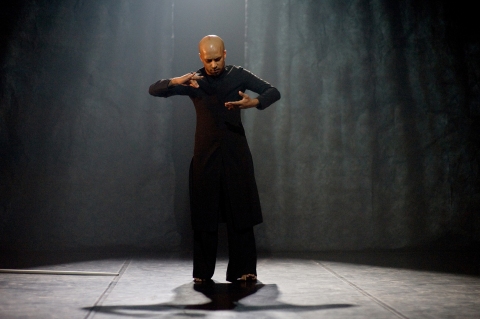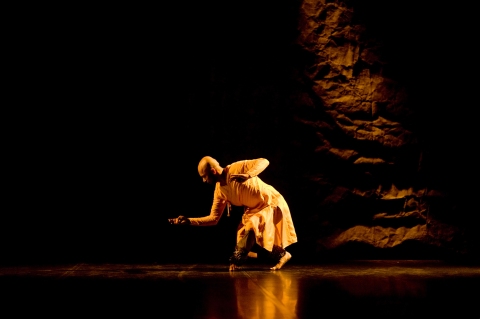Shagotom, Welcome!
creativeBangladesh is an online resource for Bangladeshi art, history or, culture.
It is Edited and Art Directed by Bangladeshi-New Yorker, LABIBA ALI.
creativeBangladesh is on FACEBOOK! Click here to join.
Happy Reading!
Labiba Ali
Editor
creativebangladesh71@gmail.com
*
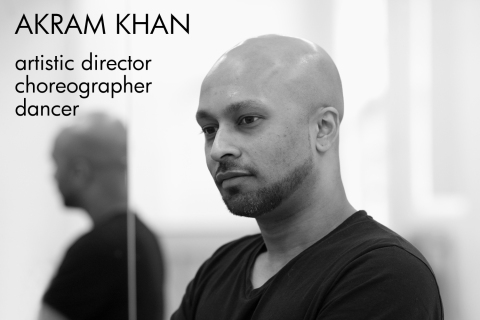
British-born choreographer Akram Khan is celebrated internationally for the vitality he brings to cross-cultural, cross-disciplinary expression. His dance language is rooted in his classical Kathak and modern dance training, which continually evolves to communicate ideas that are intelligent, courageous and new. Khan performs his own solos and collaborative works with other artists, and presents ensemble works through Akram Khan Company.
cB: I was excited to find out that you are working on a piece scheduled for the 40th anniversary of Bangladesh’s Independence. Growing up in the UK, how do you relate to Bangladesh’s Liberation Movement – what were some of the stories of the movement that you grew up listening to? How has your Bangladeshi identity evolved over the years and how have you woven this identity into your new piece, if at all?
AK: The ‘Bangladesh’s Liberation Movement’ happened during a period when I was still very young, so I was not aware of the struggle and the sense of patriotism that was deeply rooted in our house, in London. However, my mother did organize performances within the Bangladeshi community events, in which I performed regularly. Actually, I spent most of my childhood dancing short choreographies that portrayed the Harvest dance, the fisherman’s lives, I even danced pieces that reflected patriotic songs, that focused on memories of the language movement that had taken place on 21st February, 1952.
At the time, I did not understand much about the reason, I just enjoyed being on stage, and moving to music. It is only until recently, that I have started to focus on the events and historical moments, that took place during the transition of the independence of Bangladesh, and thereafter.
In terms of my identity, well, it is constantly shifting still today. However, I do not feel a deep sense of responsibility to help preserve Bangladeshi culture, or any other culture for that matter, because I wouldn’t know what defined a particular ‘culture’ anymore. I mean, most cultures have been contaminated in some way or another, and I am a ‘byproduct’ of that contaminated culture. So, I would not dare to preserve something that I was never directly part of, even if it is where my roots lie. Don’t get me wrong, my roots are an important part of my history, but my history is not what defines me, it is the present that defines my journey! My history only reminds me of what came before me, even if it is a large part of me. And only now, with the creation of the new piece called ‘DESH’, I am slowly learning about my parents’ culture. But I am only taking a few characters and events that are related to Bangladesh, because in all honesty, there is so much history in such a short time, and such incredible stories, that I will not be able to refer to all.
And so for the time being, I am focusing, to a small degree, on the Nur Hossain story, and then on one particular fisherman’s story (well, it is a fictional story), and several other characters that are from Bangladesh but now live in the U.K.
[image: Gnosis; photo credit: Laurent Ziegler]
cB: Your parents are very supportive of your work and it was your mother who enrolled you in dance classes as a child. We all know that the Bangladeshi community is not particularly fond of unconventional career choices. More often than not it is a constant uphill battle for the artist or, any creative person, to try to make our community understand and accept our work. On the flipside, these are the struggles that make us grow as a person and as an artist. Have you experienced these frustrations and, if so, to what extent have they affected and shaped your perspective as an artist? Do you feel that in some ways they may have even made you a better dancer/choreographer?
AK: I would agree that, by the community not accepting my dance and music as a serious career choice, it pushed me to then fight for what I believed in. Sometimes, when somebody fights for something, there evolves an inner belief in what they are fighting for, that then propels them to be better than what they might have been without that conviction. So, it worked out to my advantage, but I am also at a point now that the only person I have to prove something to, is myself.
But reflecting back, I must say that there are some people that are ‘dreamers’, and then there are others that are ‘believers’. And I feel that without the believers believing in the dreams of the dreamers, there would be no dream that would come into fruition. So here, I have to thank my parents for being absolute believers, not only in me but also in the arts, particularly my mother. She believed that art transcends and also erodes all borders – borders within religion, within cultures, within education, and more importantly, within oneself.
However, if I did not have my parents’ blessings, I would not have made it this far. They were and are still crucial to my growth.
cB: What advice would you give to a young Bangladeshi who wants to pursue an unconventional life?
AK: No comment!
I suppose my ‘no comment’, is a comment towards the way I feel about the uncertainties of choosing the path towards the unconventional life. I am not sure what advice I can give, simply because we are all so different, hence, we respond to different challenges differently. It all depends on what those challenges are, and how that person reacts to those challenges. The question is.. ‘How badly do you want it?’ For me, I did not simply want to dance; I ‘had’ to dance! Without it, I would disappear into a statistical number.
If anything, dance became my identity.
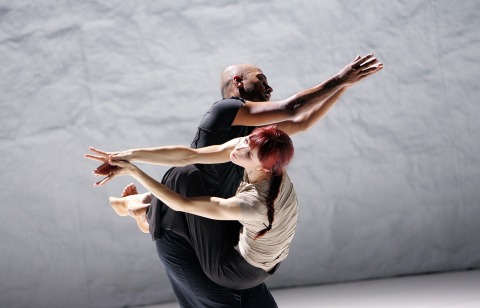

[image: Sacred Monsters; photo credit: Tristram Kenton]
cB: You are known for exploring cross-cultural themes in your choreography – from being influenced by Japanese philosophy and aesthetics to working with the National Ballet of China. Have you considered incorporating Jatra or other traditional dance forms from Bangladesh? It is sad to see the demise of Jatra, which in its current form is so grossly corrupted. Any suggestions on how to start a Jatra performing troupe and take it on an international tour?
AK: I have no idea about how to take ‘Jatra’ further than where it is, since it is not something I embodied as a child, and unfortunately, I know so little about it. To be frank, I become interested in a particular art form, when I recognize something within it, that reflects some part of me, and so a relationship takes place between my body and the art form, and I then move forwards towards learning and researching it. However, I hope I have an opportunity in the future to find that relationship between Jatra and myself.
cB: I was reading about your collaboration with Sidi Larbi Cherkaoui on ‘Zero Degrees’. In one of Sidi’s interviews, he mentioned that you both drew from your experiences of being raised in Muslim families. Meanwhile your piece ‘Vertical Road’ addresses faith and life after death. What is your audience’s reaction when you bring a spiritual theme to your choreography? In your opinion, how do Muslim artists in the West deal with spirituality and Allah in their work? Is there a major tension or, do they draw positive inspiration from their beliefs?
AK: Most often, we are received well by Muslim audiences, but I would have been able to elaborate in more detail if you asked me after June 2011, since ‘Vertical Road’ will be touring to places like Lebanon, Cairo, and Ramallah in April/May this year.
I am very excited to learn about how they will respond, and to what they will respond to and why. I feel strongly about spirituality, and so in my humble opinion, what I admire about the notion of ‘spirituality’ is that it is a formless concept, that shifts its definition, depending on who is interpreting and experiencing it. So in ‘Vertical Road’, I wanted to stay true to that… hence, the narrative remains formless…
Also, I was not so keen with this project to turn it into something too readable for the audience, because in the end, I feel you cannot ‘see’ spirituality, I would like to think that you can only ‘feel’ it. So the same goes with this piece! Its what the audience feel from the images and movements that they witness, rather than the dots that they try to connect to, in order to make it more comprehensible for them to read. Dance is predominantly about feeling something, from what they see, and not reading something from what they see! And so spirituality seemed like an obvious subject.
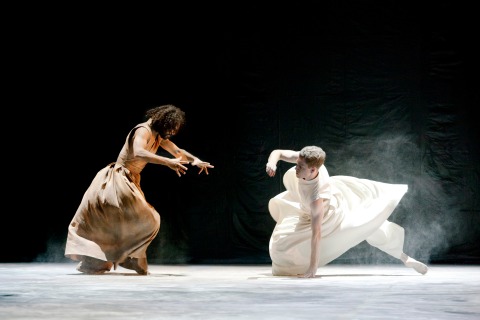
[image: Vertical Road; photo credit: Richard Haughton]
cB: Are there any plans to bring the piece with the Bangla text to New York? I would love to see it and am also curious to know what text you are using.
AK: There are some plans that are being discussed that ‘DESH’ will be presented in New Jersey in 2012, which is so close to New York. But its still provisional, and depending on certain dates being available. However, I am extremely excited to embark on this project, even if I don’t know the end destination yet! I suppose the piece feels a little like returning to some place that I may dare to call ‘home’. But in saying that, what is home?
I always say ‘home’ is a place where you find yourself, even if you find yourself in a foreign land, but then again, sometimes I feel ‘home’ is a place where you have to escape in order to find yourself. So go figure! I don’t have a definite answer, except the fact that I don’t have a definite answer!
Thank you Akram for taking the time to talk to creativeBangladesh!
For more information on the Akram Khan Company, please visit their website here.
**
CREDITS:
1st photo of Akram Khan is by Laurent Ziegler. All other credits accompany individual images.
*

Sundaram Tagore is a New York-based art historian and gallerist. A descendant of the influential poet and Nobel Prize winner Rabindranath Tagore, he promotes East-West dialogues through his contributions to numerous exhibitions as well as his eponymous galleries and their multicultural and multidisciplinary events. A candidate for a Doctorate of Philosophy from Oxford University, Tagore writes for numerous art publications. He was previously a director at Pace Wildenstein in New York. He has advised and worked with many international organizations including The Peggy Guggenheim Foundation, Venice, Italy; the Metropolitan Museum of Art, the Museum of Modern Art, New York; and the United Nations. In 1999, he was nominated by Avenue magazine as one of the 100 Most Influential Asian Americans in the United States. He has served as a juror for the 2002 UNESCO Design 21 competition and the Asian American Arts Center in New York. Recently, he was profiled on CNN International’s Talk Asia. – bio from Sundaram Tagore Gallery website
**
cB: What was the inspiration behind starting your own gallery? Was it something that you have always wanted to do or was it a gradual realization?
ST: I opened the gallery in 1999 with the idea of bringing together a global community of artists and galvanizing intercultural dialogue. Although I represent artists from a wide range of countries such as Korea, Israel, Holland, Mexico, India and the United States, they are all linked by a similar philosophical view. Each artist shares a deep concern to harness art for the betterment of society. Moreover, each of these artists creates work for humanist purposes. Theirs is a quest for aesthetic beauty and spirituality. This has been a guiding force that has allowed me to bring together artists from such disparate places and create a cohesive vision for the gallery.
I believe that art and culture are of paramount importance to life. Art and culture have the power to bring people together, which is why I formed this gallery based on intercultural dialogue.
cB: I read somewhere that your father would take the family on month-long adventure trips all over India. What was it like growing up in such a family environment?
ST: Just about every single day was crazy during my childhood. Indian homes have this tradition of an open house. Starting from 8 to 9 o’clock people would gather at houses to drink until two in the morning. Each evening artists, writers, intellectuals, poets would flood into our home. In Bengali they called this “adda” or discussion. As a child, it was both exciting and confusing. While we were growing up the old world Indian aristocratic structure was collapsing and new wealth was being created. The old aristocracy lived for culture but that lifestyle was disappearing before my eyes. We led a very nomadic life continuously travelling not just to cosmopolitan centers but also to remote villages. My father was a true Bohemian.
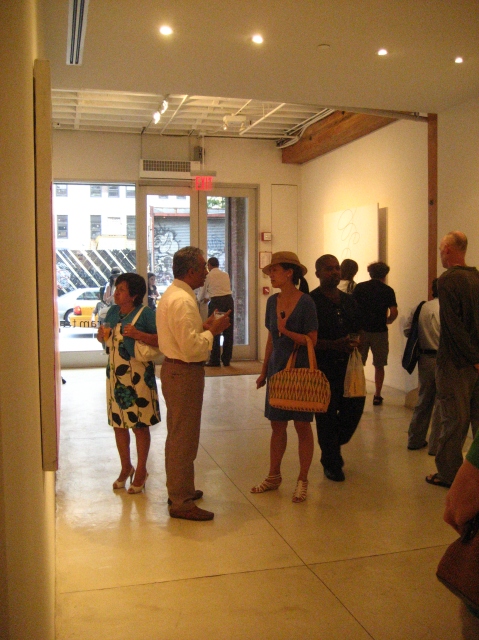
[above image: Sundaram Tagore at the opening reception of ‘New Creative Constructs’ at the Sundaram Tagore Gallery in Chelsea, NY]
cB: What do you think of the current art scene in both the Bengals? Any Bengali/Bangladeshi artist whose work you particularly admire?
ST: There is a great deal of talent emerging both from Bengal and Bangladesh. In fact I am thinking about having a historical exhibition of Bangladeshi art but it takes some to identify the conceptual basis of the show as well as the most suitable curator who has the academic background to pull it together. It will be in the same line of exhibitions that we have done in the past.
cB: One of your visions for your art gallery is to facilitate spiritual, aesthetic dialogues. Do you see any change among the younger generation in that they are trying to lead more balanced lives and giving art more importance than their parents? (specifically among the desi youths..)
ST: Yes I believe that this is true. Art is a necessity. Art is very much like a diet that sustains one’s spiritual and aesthetic well being. It is not to be slighted that we as human beings have always created art since the pre-historic era. Art has existed for 40,000 years. We have a basic need to express ourselves in visual terms. It fulfills the realm of the imagination. The purpose of art is to inspire the soul, to make us think, and help us look at the world in new ways.
Today art has become an integral part of the economy and society has recognized the important role of aesthetics. Look at the Bilbao effect in Spain for instance. A single museum revived the economic standing of a city in front of a world audience. Prior to Bilbao’s museum, no one talked about that region of Spain. Today the cosmopolitan world visits Bilbao purely because of the museum. Art has allowed them to regenerate the economic side of the story. Particularly in contemporary democratic societies, people are realizing that art is a cohesive factor that can bring together people from many different levels.

[above image: Guests at the opening reception of ‘New Creative Constructs’ at the Sundaram Tagore Gallery in Chelsea, NY]
cB: You also have a gallery in Hong Kong. How has Asians responded to western art? Earlier art had predominantly traveled in one direction, from East to West – how has that changed in recent years as more Asians get access to western art?
ST: Asian buyers are playing an increasing role in the international art market particularly as they travel and create relationships overseas. As Asians continue to invest in properties and businesses abroad they are opening up to buy Western art as well as growing their Asian collections. I believe this will continue to a point where people will soon collect art based solely on aesthetics rather than the nationality of the artist. Cosmopolitanism is truly extending into the art world.
cB: What role can the younger generation play in cross-cultural exchanges especially in today’s fast-paced, hi-tech world?
ST: The younger generation are facing a globalized world that is more flattened and highly digitalized both in the positive and negative sense. There is also an economic brunt which they have to shoulder from the recent economic crisis. Hence their activities and decisions will either enable them to build a sustainable society or destroy it. I believe that the socially conscious entrepreneurs in our society will play an increasingly leading role in determining the kind of world we create and the kind of society we build. Within that context, art will come to play a progressively important role both offering a critique and serving a celebratory function.
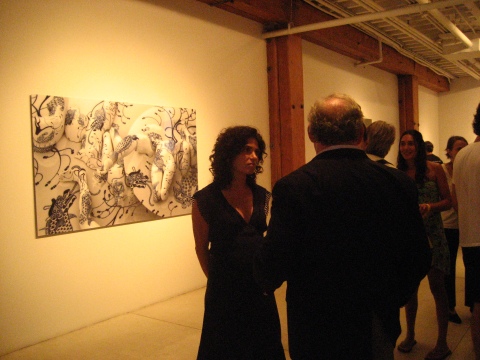
[above image: ‘Fragile-Dragon’ by Kim Joon, part of ‘New Creative Constructs’ at the Sundaram Tagore Gallery in Chelsea, NY]
cB: And how can young members of the Bengali diaspora help to bring mainstream awareness to their cultural heritage?
ST: First and foremost I suggest they create a standard of high aesthetic value, whether they are talking about poetry, literature or compositional art. It is important to present artistic ventures or events with serious intellectual and spiritual thought behind them in a highly cohesive manner. And I am not talking about money, I am talking about ideas.
cB: Some future projects / plans for Sundaram Tagore Art Gallery that you are extremely excited about…
ST: I am very excited about our film making ventures. The first film is about an Indian artist and the Indian diaspora. The second film will focus on the Louis Kahn parliamentary complex in Bangladesh. In fact I have already had meetings with government agencies who are highly supportive of the second project.
I am including a short synopsis of the first film below for your reference:
Natvar Bhavsar The Poetics of Color
A Film by Sundaram Tagore
This documentary explores the life and work of the painter Natvar Bhavsar. Born in Gujarat in 1934, Bhavsar settled in New York City, the very nerve center of the art world, in the mid-1960s where he still lives and works. The central theme of the film is the multicultural nature of Bhavsar’s work and how that has influenced the trajectory of his career. Although it’s common today for artists to work cross culturally and find critical and commercial acceptance outside their own spheres of origin, Bhavsar was a pioneer who paved the way for subsequent generations of artists. This film is not only a history of one artist’s journey, but a celebration of the Asian diasporic community and its contribution to American contemporary art.
Thank you Sundaram for taking the time to join us for inConversation with creativeBangladesh!
For more information on the Sundaram Tagore Gallery, please visit their website here.
**
CREDITS:
photos: Labiba Ali for creativeBangladesh
*

Penned by prolific reader and regular guest columnist NAFIS HASAN, Dissecting Contemporary Bangla Literature (DCBL) reviews and informs us on which recent Bangla books are worth our while….and which ones don’t quite make the mark.
DCBL appears on creativeBangladesh on alternate months. Nafis Hasan writes and delivers his verdicts from an eastern corner of Pennsylvania.
– Labiba / creativeBangladesh
**
Given that the month of August holds a special significance in the history of newly independent Bangladesh – the death of the Father of the nation Sheikh Mujib, and also more recently, the death of the famous poet Shamsur Rahman, and co-incidentally I had just read two really awesome books on the liberation war, I thought it would be perfect to do my reviews this time on these two books. So without further ado, let me move on to the reviews.


“Taalash” by Shahin Akhter is very different than most other real life accounts of the liberation war. It is by no means for the weak-hearted and romantic minded for mainly 3 reasons:1. It does not talk about the glory of liberation
2. It depicts the most cruel and harsh pictures of the war, especially from the perspective of women3. It is all REAL
The book revolves around a journalist / social worker’s search for the truth about the post-war lives of the female survivors and victims of abuse by Pakistani soldiers. The story is mainly told by a certain Mariam aka “Mary”, a small-town girl who came to the capital for higher education along with her gullible, innocent brother, and by Mukti, the social worker in search of the forgotten lives of the “Birangonas” of 71.The story progresses from pre-war period to post-war era to a newly independent Bangladesh when Sheikh Mujib was still alive to even beyond that. Through riveting emotions and powerful, but simple words, the author erases the line between fiction and reality as she depicts the destitute state of the “Birangonas”, ones who were once hailed as his mother by the Bangabandhu.
The pages of this book are filled with vehement accusations, despair, defeat, and finally coming to a mystical conclusion making the reader acquainted with the ugliest face of war. The fact that the glory of war does not faze these defeated women, some who even grew to love their incarcerators out of desperation, is evident because as Mary puts it, “maybe we were better off in captivity as some officer’s object of lust and false love rather than being the object of humiliation by the independent society of Bangladesh”.The same words are echoed by a certain interviewed freedom fighter who stated that he could not bear to even look at these captive women once they freed them – forgetting how they were chanting their mantras of saving all their mothers and sisters from captivity. The author lashes out at this continued injustice, even years after the war, when the certificate of a “Birangona” became a license for prostitution, either in the park or in someone’s bed under the pretense of a marriage. All this and more as these women fight tooth and nail for establishing their place in society and to get recognized for bearing the ugliest pain of this land, this country that the Pakistani army inflicted.
This book will bring out the ugliest of the 1971 war, especially not only the highly publicized notorious image of the Pakistani army and the Rajakars, but also those of the freedom fighters, bringing everybody down to the same level of human emotions – be it Pakistani soldier, Rajakar sycophant or a glorified Freedom fighter.
About the author – SHAHIN AKHTER fights diligently for the rights of women through the organization Ain o Shalish Kendro (ASK) in Dhaka, Bangladesh. She has previously tried her hand in writing through her journalism and documentaries, but this is the first time she has tried to write a fiction based on real facts.
Caution – This book is not for the weak-hearted or the hapless romantics.
*


Although Nirmolendu Gunn is mainly known for his poetry, especially the ones he wrote on his cellphone through texting and claimed them to be “Muthofoner Kabbo”, his skills as a prose writer are on the same par as his poetry skills. And this is very evident in his memoir of the 1971 war “Attokotha” where he blends in personal experience, poetry, ancedotes, publications and various other sources to depict the picture of the liberation war through the eyes of the one who fought with the pen rather than the sword.
The book is doubtlessly one of the best examples of how mellifluous and beautiful Bengali is, and the words juxtapose perfectly with each other without diminishing the effect of the other. In this book, he talks about his experience through the war, how he travelled for six months from Dhaka to his village in Netrokona during the war, his near-death experience and a poetic revelation even in the moment when he was expecting Death to come knock on his door, how his friend saved him from being incinerated in his workplace as he was about to go to work his shift on the night of 25th March.
The book is filled with powerful emotions, not only because of the amazing vocabulary skills of Gunn, but also because of the experiences and the fact that they are all true and real. The fine mesh of poetry and prose presented in this book is bound to move any reader, and the little sprinkle of humor characteristic of Gunn makes this a bittersweet read with both tears of grief and joy.
Nothing much can be said about Gunn himself, except his trademark beard and his quirky humor and absolutely astounding poetry that he writes. This book is definitely a must-read for all ages starting from 14. Just a note, this book was first published as a series in the monthly magazine called “2000” before compilation and publication as a book.
That would be all for this month folks! Any comments or questions or concerns are most welcome!
**
CREDITS:
illustration: Usa Seraj
art director / graphic design & layout: Labiba Ali for creativeBangladesh
*
